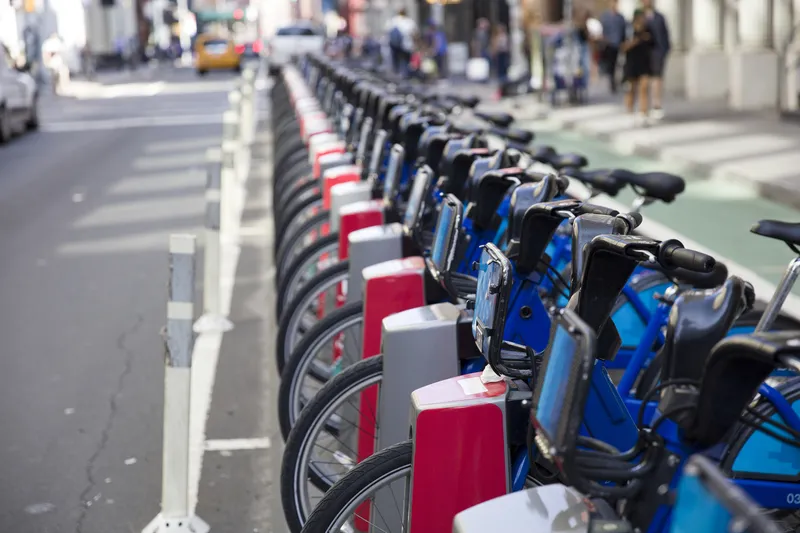At yesterday’s Opening Plenary, Chris Urmson’s keynote speech dealt with the reality of driverless cars on our roads. By far and away their greatest benefit to mankind will be the potential to achieve an incredible saving of life and injury on the roads, as Urmson, director of the Google Self-Driving Car program, revealed to delegates.
In response to an Associated Press article last month disclosing that self-driving cars have been involved in four accidents in the state of California, Urmson revealed th
June 2, 2015
Read time: 4 mins
At yesterday’s Opening Plenary, Chris Urmson’s keynote speech dealt with the reality of driverless cars on our roads. By far and away their greatest benefit to mankind will be the potential to achieve an incredible saving of life and injury on the roads, as Urmson, director of the 1691 Google Self-Driving Car program, revealed to delegates.
In response to an Associated Press article last month disclosing that self-driving cars have been involved in four accidents in the state of California, Urmson revealed that over the 1.7 million miles logged by Google’s self-driving cars, they had been involved in a total of 11 accidents over the six years — all of which were minor with only light damage — and in none of them was the Google self-driving car at fault. That’s 0.64 accidents per 100,000 miles driven. As a bald, single number without context, that statistic is misleading, and following the AP article, Urmson wrote and published a detailed blog to provide the necessary context. It was written from a safety perspective to share patterns that had been observed.
“A lot of this won’t be a surprise, especially if you already know that driver error causes 94% of crashes,” Urmson says.
Even if his team’s software and sensors can detect a sticky situation and take action earlier and faster than an alert human driver, Urmson points out that sometimes it just won’t be able to overcome the realities of speed and distance.
“Sometimes we’ll get hit just waiting for a light to change. And that’s important context for communities with self-driving cars on their streets. Although we wish we could avoid all accidents, some will be unavoidable.”
“Rear-end crashes are the most frequent accidents in America, and often there’s little the driver in front can do to avoid getting hit. We’ve been hit from behind seven times, mainly at traffic lights but also on the freeway. We’ve also been side-swiped a couple of times and hit by a car rolling through a stop sign. And as you might expect, we see more accidents per mile driven on city streets than on freeway; We were hit eight times in many fewer miles of city driving. All the crazy experiences we’ve had on the road have been really valuable for our project. We have a detailed review process and try to learn something from each incident, even if it hasn’t been our fault.
“Not only are we developing a good understanding of minor accident rates on suburban streets, we’ve also identified patterns of driver behaviour (lane drifting, red light running) that are leading indicators of significant collisions. Those behaviours don’t ever show up in official statistics, but they create dangerous situations for everyone around them.
“Lots of people aren’t paying attention to the road. In any given daylight moment in America, there are 660,000 people behind the wheel who are checking their devices instead of watching the road. Our safety drivers routinely see people weaving in and out of their lanes. We’ve spotted people reading books, and even one playing a trumpet. A self-driving car has people beat on this dimension of road safety. With 360 degree visibility and 100% attention out in all directions at all times, our newest sensors can keep track of other vehicles, cyclist, and pedestrians out to a distance of nearly two football fields.
“Intersections can be scary places. Over the last several years, 21% of the fatalities and about 50% of the serious injuries on US roads have involved intersections. And the injuries are usually to pedestrians and other drivers, not the driver running the red light.
This is why we’ve programmed our cars to pause briefly after a light turns green before proceeding into the intersection — that’s often when someone will barrel impatiently or distractedly through the intersection.
“These experiences (and countless others) have only reinforced for us the challenges we all face on our roads today. We’ll continue to drive thousands of miles so we can all better understand the all too common incidents that cause many of us to dislike day-to-day driving — and we’ll continue to work hard on developing a self-driving car that can shoulder this burden for us.”
In response to an Associated Press article last month disclosing that self-driving cars have been involved in four accidents in the state of California, Urmson revealed that over the 1.7 million miles logged by Google’s self-driving cars, they had been involved in a total of 11 accidents over the six years — all of which were minor with only light damage — and in none of them was the Google self-driving car at fault. That’s 0.64 accidents per 100,000 miles driven. As a bald, single number without context, that statistic is misleading, and following the AP article, Urmson wrote and published a detailed blog to provide the necessary context. It was written from a safety perspective to share patterns that had been observed.
“A lot of this won’t be a surprise, especially if you already know that driver error causes 94% of crashes,” Urmson says.
Even if his team’s software and sensors can detect a sticky situation and take action earlier and faster than an alert human driver, Urmson points out that sometimes it just won’t be able to overcome the realities of speed and distance.
“Sometimes we’ll get hit just waiting for a light to change. And that’s important context for communities with self-driving cars on their streets. Although we wish we could avoid all accidents, some will be unavoidable.”
Inescapable truth
Urmson acknowledges an inescapable truth: if you spend enough time on the road, accidents will happen whether you’re in a car or a self-driving car.“Rear-end crashes are the most frequent accidents in America, and often there’s little the driver in front can do to avoid getting hit. We’ve been hit from behind seven times, mainly at traffic lights but also on the freeway. We’ve also been side-swiped a couple of times and hit by a car rolling through a stop sign. And as you might expect, we see more accidents per mile driven on city streets than on freeway; We were hit eight times in many fewer miles of city driving. All the crazy experiences we’ve had on the road have been really valuable for our project. We have a detailed review process and try to learn something from each incident, even if it hasn’t been our fault.
“Not only are we developing a good understanding of minor accident rates on suburban streets, we’ve also identified patterns of driver behaviour (lane drifting, red light running) that are leading indicators of significant collisions. Those behaviours don’t ever show up in official statistics, but they create dangerous situations for everyone around them.
“Lots of people aren’t paying attention to the road. In any given daylight moment in America, there are 660,000 people behind the wheel who are checking their devices instead of watching the road. Our safety drivers routinely see people weaving in and out of their lanes. We’ve spotted people reading books, and even one playing a trumpet. A self-driving car has people beat on this dimension of road safety. With 360 degree visibility and 100% attention out in all directions at all times, our newest sensors can keep track of other vehicles, cyclist, and pedestrians out to a distance of nearly two football fields.
“Intersections can be scary places. Over the last several years, 21% of the fatalities and about 50% of the serious injuries on US roads have involved intersections. And the injuries are usually to pedestrians and other drivers, not the driver running the red light.
This is why we’ve programmed our cars to pause briefly after a light turns green before proceeding into the intersection — that’s often when someone will barrel impatiently or distractedly through the intersection.
“These experiences (and countless others) have only reinforced for us the challenges we all face on our roads today. We’ll continue to drive thousands of miles so we can all better understand the all too common incidents that cause many of us to dislike day-to-day driving — and we’ll continue to work hard on developing a self-driving car that can shoulder this burden for us.”










